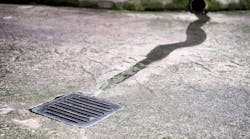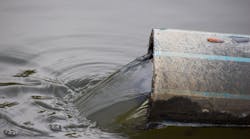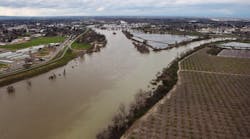WASHINGTON, DC, Feb. 23, 2012 -- EPA has issued its 2012 construction general permit (CGP), which will provide streamlined permitting to thousands of construction operators, while protecting waterways from discharges of polluted stormwater from construction sites.
The new permit was shaped by important input from the public and stakeholders to ensure that it provides important protections for waterways, while also providing flexibility to operators. It will be effective in areas where EPA is the permitting authority: Idaho, Massachusetts, New Hampshire, New Mexico, Washington, D.C., and most U.S. territories and in Indian country lands.
The 2012 CGP is required under the Clean Water Act and replaces the existing 2008 CGP, which expired on February 15, 2012. The new permit includes a number of enhanced protections for surface waters, including provisions to protect impaired and sensitive waters.
Under the Clean Water Act, national pollutant discharge elimination system (NPDES) permits are typically issued for a five-year period, after which time EPA generally issues revised permits based on updated information and requirements, as is the case with today's announcement.
NPDES permits control water pollution by including limits on the amount of pollutants that can be discharged into waterways by specific sources. The permit also provides new flexibilities for operators. For example, it allows for emergency projects (e.g., restoration following a flood or other natural disaster) to begin immediately without permit authorization from EPA, while still retaining full authority for EPA to ensure that the project proceeds in an environmentally responsible manner once it has commenced.
The permit also enables operators of already permitted projects flexibility where compliance with a new permit requirement is economically impracticable.
The 2012 CGP updates include steps intended to limit erosion, minimize pollution sources, provide natural buffers or their equivalent around surface waters, and further restrict discharges to areas impaired by previous pollution discharge.
Many of the permit requirements implement new effluent limitations guidelines and new source performance standards for the construction and development industry that became effective on February 1, 2010, which include pollution control techniques to decrease erosion and sediment pollution.
More information on the proposed construction general permit:
http://cfpub.epa.gov/npdes/stormwater/cgp.cfm
###
Continue Reading
Continue Reading
Sponsored Recommendations
Sponsored Recommendations
Automated Fresh Water Treatment
March 15, 2024
Digital Transformation Enables Smart Water
March 15, 2024


